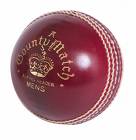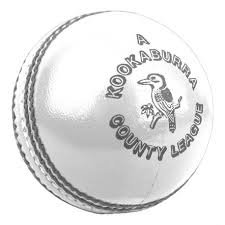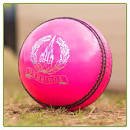
 |
| Index | |
|
|
|
|
|
| Red, white & pink ball cricket    In Test cricket, professional domestic games that spread over a multitude of days, and almost the entirety of amateur cricket, the traditional red cricket ball is normally used White balls were introduced when one-day matches began being played at night under floodlights, as they are more visible at night; all professional one-day matches are now played with white balls, even when they are not played at night. The white balls have been found to behave differently to the red balls, most notably that they swing a lot more during the first half of an innings than the red ball, and that they deteriorate more quickly. Manufacturers claim that white and red balls are manufactured using the same methods and materials, other than the dying treatment of the leather Another problem associated with white cricket balls used in One Day Internationals is that they quickly become dirty or dull in colour, which makes it more difficult for batters to sight the ball after 30-40 overs of use. Since October 2012, this has been managed by the use of two new white balls in each innings, with a different ball used from each bowling end; the same strategy was used in the 1992 and 1996 Cricket World Cups. Pink balls were developed in the 2000s to enable Tests and first-class matches to be played at night. The red ball is unsuited to night tests due to poor visibility, and the white ball is unsuited to first-class cricket because its rapid deterioration makes it unable to be used for eighty overs as specified in the regulations, so the pink ball was designed to provide a satisfactory compromise on both issues It is still considered more difficult to see than a white ball; and the leather is more heavily dyed than in a red ball, which better preserves its colour and visibility as it wears but also gives it slightly different wear characteristics. It has performed well enough in testing and first-class cricket to be approved for use in international cricket A pink ball was used for the first time in an international match in July 2009 when the England Woman's team defeated Australia in a one-day match at Wormsley and a pink ball was used in a day-night Test match for the first time in November 2015. Other colours were also experimented with, such as yellow and orange (glowing composite), for improved night visibility, but pink proved to be the preferred option. |
||||||